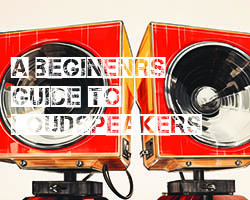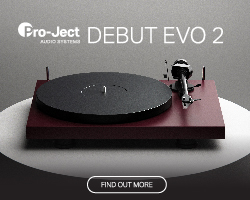The Silver Luna integrated valve amplifier from Polish company Fezz Audio uses EL34 tubes and costs £725 in Poland (and 1700,00 Eur for PRESTIGE export version) , which is something of a budget price for tube amp. Dominic Marsh takes a listen.
Whoever said that turntables and valve amplifiers were strictly yesterday’s technology? Far from being the dinosaurs of hifi from days gone past, there is a huge unprecedented resurgence of both and this trend shows no sign of letting up just yet either.
Enter then the Fezz Audio (A newly formed division of Toroidy.pl) Silver Luna valve amplifier sporting EL34 output valves and designed and manufactured in Poland. The most critical component in valve amplifiers is of course the transformers and who better to specify and build them than Toroidy who have been manufacture high quality transformers for many years. I have used Toroidy myself not too long ago when a CD player I owned originating from the far east decided one of its mains transformers needed a permanent holiday. This was not long after the manufacturer ceased trading but a quick email to Toroidy had a custom built replacement winging its way to me a week later and at a very sensible price too I might add. My fellow reviewer Dan Worth has balanced mains units feeding his system, fitted with Toroidy transformers.
CONSTRUCTION
The entire chassis is formed of folded mild steel plate and is nothing remarkable to look at in form and shape. Fezz Audio do make at least make an attempt regarding the aesthetic aspect by giving a choice of paint colours. Black Ice gloss chassis with matte black finish transformer covers, White gloss chassis with Sky Blue gloss transformer covers, Burgundy gloss chassis with matte black transformer covers and Burning Red gloss chassis with matte black transformer covers. The colourways do at least make the amplifiers more attractive than plain black all over with no relief. To the centre of the front panel is a bright metal oval plaque proclaiming “Fezz Audio” in laser cut relief.
Instead of using the traditional laminated plate type of construction for the output transformers, Fezz Audio use Toroidy’s own in-house designed and built toroidal transformers in the output stages as well as the mains transformer. Fezz Audio say there are many quality components installed like Alps volume pots and Nichicon FG Fine Gold capacitors.
The review sample provided was finished in the Burning Red finish with silver lettering which I found difficult to read, especially round the back when making connections due to the contrast in tones between the red and the silver. It was less important on the front panel for me as remembering what only two controls do wasn’t dependant at all on the lettering to recall. On any of the other colours the lettering is clear and distinct with higher contrast ratios and in the case of the white chassis variant, black lettering is used.
The valves were packed separately in their original Electro Harmonix boxes, each thoughtfully numbered in the order they were to be installed into the amplifier. Nice to see good quality valves being used. It is wise to do a quick check of the valve biasing (Easy to perform, well explained in the handbook) and all was still within specification when installed.
The amplifier has three line level inputs, selectable by the right hand front panel rotary control. The left side of the front panel sports the volume level rotary control. The rear of the chassis we find three sets of single ended RCA inputs, then the loudspeaker connectors with a single pole for the negative or return connection and either an 8 Ohm or 4 Ohm tapped connection for the corresponding impedance value of the speakers being employed. Finally, an IEC mains inlet plug with a mains on/off switch above it. This is one of my personal bugbears as it means components fitted with rear mounted power switches give you a choice of either having them sited on the top shelf of the rack for easy access, or having to contort your body and arm to reach it between the shelves lower down in the rack. With the heat from the valves to contend with during switch off or inadvertently knocking a valve and breaking it, it makes even less sense to rear mount the power switch. Yes I know, it is all to do with cost, but I have seen many amps with power switches on the side panel or underneath the front panel, which takes all that stress and risk away and doesn’t add THAT much to the build cost in reality.
There is no remote control facility.
SOUND QUALITY
EL34 valves and their circuits do have a reputation that precedes them and are often accused of being syrupy, warm toned, coloured and combinations thereof. It’s all in the implementation of course and usually it’s because designers try to wring more performance from EL34’s than they are comfortable in delivering. Reputations, rumours and whispers do not interest me in the slightest and this was just another amplifier submitted for review and so I began listening with an open mind.
As is the case with most valve amplifiers, they seem to need around 20 – 30 minutes to come “on song” from switch on and I gave a comfortable 30 minutes warm up time before each listening session.
What first struck me was how light and airy it sounded, that is not to say light in power or weight, more by the transparency and delicacy it was showing me. Images were hanging in the air as if supported by near invisible gossamer threads and it was very close to being a true walk around the sound stage experience. I would expect that kind of performance from a 6550 valve and above, but not from an EL34, which shows some care has been taken with the circuit topology in the design of this amplifier. Having a rated 35 watts per channel into 8 ohms to play with, you could be forgiven for thinking this amplifier doesn’t have a lot of headroom to play with, but you would be wrong. It could go very loud without showing any signs of break up or distress and that was a test rather than saying this amplifier could belt out heavy rock music day after day, because that’s not what this amplifier’s true forte is by any means.
It was in its element with female vocals, acoustic, jazz and middle of the road kind of music, where the natural organic sounds of these genres shone through. It would play large scale orchestral and rock music in moderation at sensible levels, but push the volume control around past 12 o’clock and the edges started to fray a bit, albeit at a level that wasn’t comfortable to listen to. A party or disco amplifier it is not, for sure. Keep the volume control below that 12 o’clock mark and it held it together really well and when I put James Newton Howard and Friends direct cut album on to play the Silver Luna gave me a fast, lithe and vivid performance that was a real pleasure to listen to.
Whenever I listen to Fink’s “Wheels Beneath My Feet” live album I have certain benchmarks I pay particular attention to during my evaluations and here are just some of the key points. Kick drum must have a clearly defined start, middle and end to each strike and you must be able to hear the shell of the drum, not just the actual strike by the beater alone – be it a hard or soft faced beater being used. Some drummers remove the front skin for a tauter less reverberant sound and that too must be easily deciphered. Snare drum is a very revealing instrument, full of timbres and resonances, particularly so during rim shots where the rim and the shell has to be clearly heard during each strike, but above all else it must be completely realistic, similarly so with the Tom Toms and the Floor Tom. I cannot abide any “tish” sort of sound from any of the cymbals, particularly the Ride, Crash, or Riveted cymbals and if you cannot clearly hear that a wooden stick is making contact with a metal cymbal and the resulting shimmer following the strike then something is amiss. That is a roundabout and long winded way of saying that the Fezz Audio Silver Luna amplifier passed all of those benchmark criteria.
CONCLUSION
Well, the Fezz Audio Silver Luna EL34 just about shrugged off all that I pitted against it and it didn’t offend me at any point either. It is a sweet natured beast rather than a snorting bull of an amp, but it can kick like a mule when called to do so, provided you don’t pair it with inefficient speakers. It wouldn’t win a beauty pageant, but to me most of the budget seems to have gone into the internals rather than wearing a fancy coat designed to impress. A choice of colours deflects the mind away from that though and is a good compromise.
As an introduction to the world of valve amplifiers, it gives an insight into that velvety “Valve sound” without busting the bank balance and you can be sure it will have both reliability and longevity too.
Sound quality: 8.7/10
Value for money: 8.5/10
Overall: 8.43/10
Pros:
Great sound, quality components used throughout and chassis colour choices should find many fans
Cons:
Lack of valve protection cage and rear mounted power switch (see text above)
Dominic Marsh
SPECIFICATIONS (Not verified by Hifi Pig)
| Maximum output power : 2 x 35W / 8Ω |
| Circuit type : AB class |
| Output impedance : 4Ω / 8Ω |
| Inputs : 3 x RCA |
| Harmonic distortions THD : < 1% |
| Frequency response : 15Hz-77kHz (-3dB) |
| Power consumption : 150W |
| AC fuse : 3,15A T |
| Net weight : 15,3kg
|
| Dimensions : 400x320x165mm |
| Tubes : EL34 x 4 (power output), ECC83 x 2 (pre-amplifier and power drivers) |
|
|












































































































































































































You must be logged in to leave a reply.